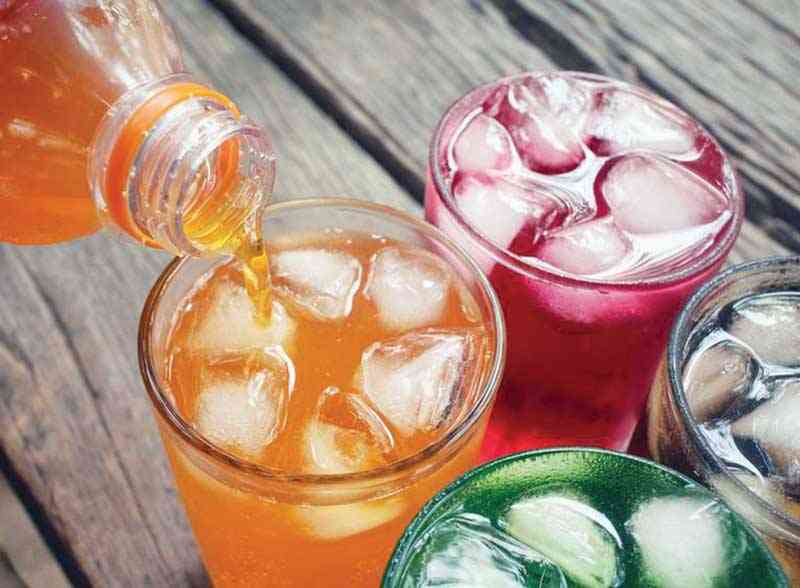
In the recent 2024 National Budget statement, Finance and Investment Promotion minister Mthuli Ncube proposed the introduction of a levy of US$0,02 per gramme of sugar contained in beverages with effect from January 1, 2024.
There are two broad reasons why the government would want to tax sugar consumption. It is to reduce excessive sugar consumption and to increase the revenue base for government in the form of taxes.
There could be little scientific debate left on the causation and co-relation that exists between excessive daily sugar intake and heightened risk of contracting non-communicable diseases (NCDs), such as diabetes, cardiovascular and respiratory diseases. Consumption of Sugar Sweetened Beverages (SSBs) has risen in low to middle-income countries spurred by the significant increases in affordability.
The negative impact on public health and the strain on the healthcare systems associated with NCDs has taken a toll on public funds, and understandably, governments are forced to act.
What should be very clear in the minds of policy makers in the introduction of these taxes is that sugar intake is not the bedrock of the problem statement, excessive sugar intake is.
The 2022 World Health Organisation (WHO) Manual on Sugar-Sweetened Beverage Taxation Policies recommends that quantifying excess sugar consumption with reference to WHO or national sugar guidelines should provide the bare foundation for the taxation of SSBs.
The levy, in its form as proposed in the national budget, seeks to levy a tithe on every level of sugar consumption regardless of how minimal it is — an implied assertion from authorities that faultily judges that any level of sugar consumption is a public health threat.
Without quantifying how much sugar is regarded as excess, and without clear policy direction on what the intended levy seeks to achieve in terms of targeted sugar consumption per capita, the tax will only serve as a regressive tariff to the economy at large.
- Chibuku NeShamwari holds onto ethos of culture
- Chibuku NeShamwari holds onto ethos of culture
- Why now for Shaya?
- Why now for Shaya?
Keep Reading
In the tax law formulation of this sugar levy, it is highly recommended that policy-makers consider a tax floor based on sugar content, above which any excess sugar is then subject to tax.
This is crucial to stimulate industry’s reformulation initiatives that seek to reduce sugar content in beverages to (or towards) specific moderate levels as per national health policy guidelines.
The proposed levy, which taxes even the slightest sugar content, poses an existential risk to beverages manufacturers and the entire sugar industry in Zimbabwe.
The direct inference industry is getting from this proposed levy is — “eliminate all sugar content in beverages” instead of “reduce excessive sugar content in beverages”.
A good example to draw lessons from is the United Kingdom’s Soft Drinks Industry Levy (SDIL), which has a tiered approach and only starts to exact a tax on sugar content that is above 5g for every 100 millilitres of beverage.
South Africa’s sugar-based Health Promotion Levy also starts to impose a toll on sugar content that is above 4g for every 100 millilitres.
In the UK’s case, it was specifically designed to encourage producers to reduce their sugar content without having to increase consumer prices.
The response to this tiered tax was that the beverages trading volumes largely remained unchanged, but industry was strongly enticed to reformulate their products to reduce sugar content, which led to lower daily sugar intake per capita.
With the tiered Health Promotion Levy in South Africa, one study found that while beverages sales declined 15%, the mean daily sugar intake from taxed beverages fell by a relatively higher 37,5% after the promulgation of the policy.
In both the UK and South African cases, the policies were able to reduce the sugar intake with relative minimal adverse impact to their beverages industry.
Plausibly, Zimbabwe’s proposed sugar levy, which is not tiered, will materially shrink the beverages industry and all related players in the entire value chain system starting from sugarcane farmers, right up to the distributors and retailers.
Admittedly, the need to increase the revenue base of the Zimbabwean government is key to improving the ailing health sector and funding of advancements in agriculture, mining and infrastructure development as enshrined in the spirit of National Development Strategy 1.
To seek to foster growth in the revenue base through the introduction of this sugar levy is not, per se, an adverse objective. However, this needs to be reviewed in the broader context of whether all other challenges currently affecting revenue collection on existing tax heads have been appropriately addressed.
The risk is that the formal entities currently afflicted by the existing taxes will be the ones to carry the heaviest burden of these sugar taxes while other players will use the country’s porous borders to smuggle in cheaper beverages from lower-tax jurisdictions, which will find their way into the local market.
If this occurs, it will effectively result in an indirect migration of beverages manufacturing from Zimbabwe into neighbouring countries.
The results of such sub-optimal policy formulation will be evident within the medium to long-term. A diminished beverages industry will, inadvertently, lead to lower tax revenues for the government, a stark contrast to the initial purpose and intent of the sugar levy.
The last consideration, which is most critical is the level of taxation proposed. At US$0,02 per gramme of sugar content, the tax is so punitive that there is no reasonable prospect that beverage manufacturers will be able to pass even 50% of this tax to the final consumers.
Consider that a 330ml soft drink bottle that contains 35g of sugar and is currently priced at US$0,25 per unit will attract a hefty sugar levy of US$0,70.
If the manufacturer decides to have a 100% tax pass-through to the customers, that beverage’s selling price will increase 280% from US$0,25 to, at least, US$0,95.
Even if the beverage manufacturer decides to massively invest in reformulations and reduce sugar content by 50%, that beverage will still attract a weighty tax of US$0,35 and a price increase of 140%.
In a low-income country, such as Zimbabwe, the price elasticity of demand is very high.
Customer demand will immediately plummet to levels that will make it unsustainable for beverage manufacturers to continue operations in the SSBs segment.
This proposed level of sugar levy will, undoubtedly, have catastrophic consequences for industry. When this levy is compared to regional and international cases of other jurisdictions with similar sugar taxes, it becomes clear that the Zimbabwean proposed tax will be a remote outlier in its nature and extent.
Economic players in Zimbabwe know that the only thing constant in our local environment is change. Industry has gone through various seasons of epic swings in the local trading environment but scarcely any cases in our history, if at all, will come close in their severity to the projected impact of this sugar levy on the beverages industry, in particular, and on the economy as a whole.
The authorities are imperatively implored to re-visit this policy and critically re-think whether and to what extent, any positive social impact and improved tax revenue base will outweigh the negative consequences of the proposed sugar tax on the economy as a whole.
Mukosi is a chartered accountant and a member of the Institute of Chartered Accountants of Zimbabwe. He did his articles with one of the “Big Four” audit and accounting firms and is a seasoned finance and corporate strategy professional with considerable experience in the fast moving consumer goods sector. He writes in his personal capacity.






